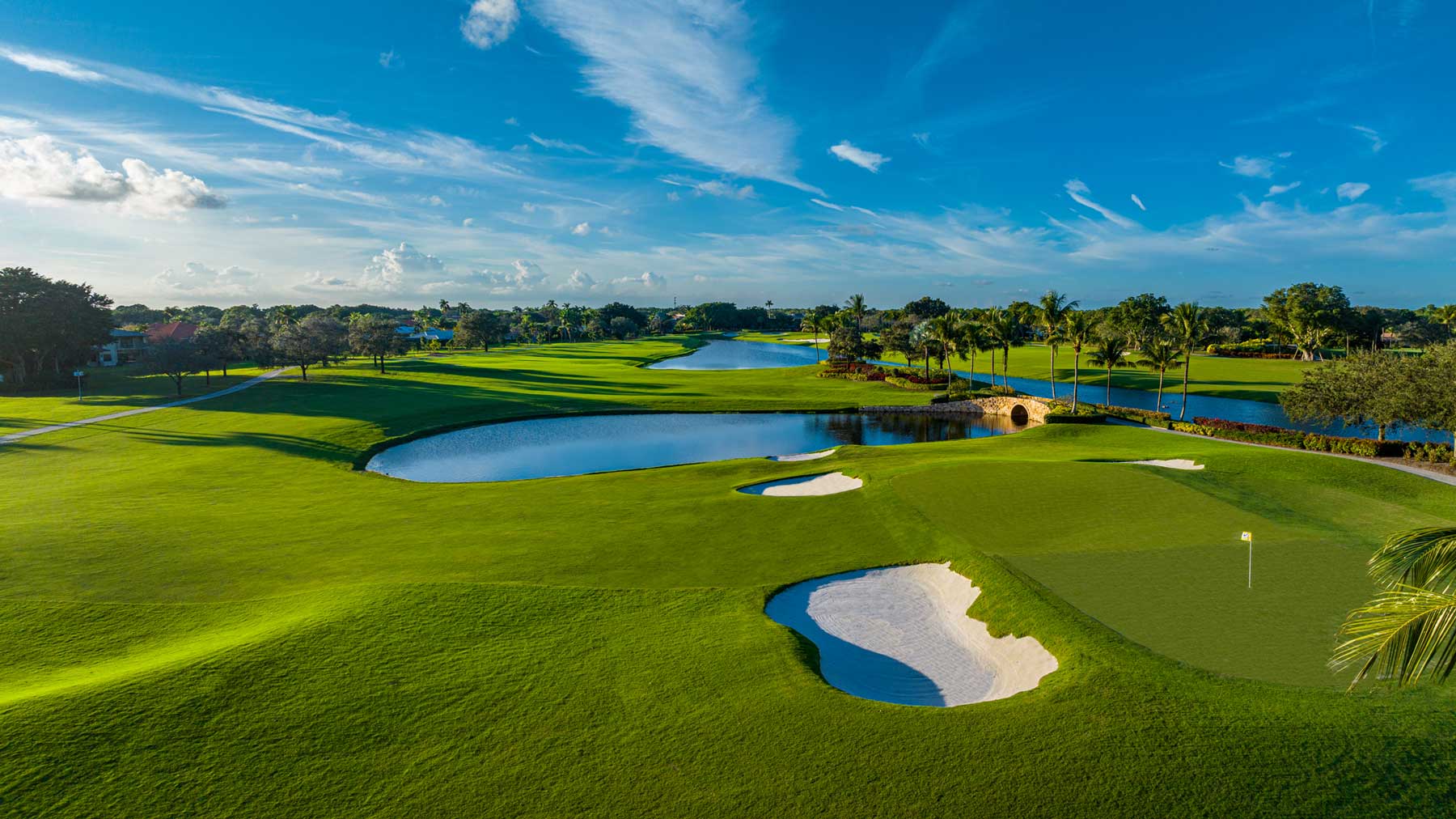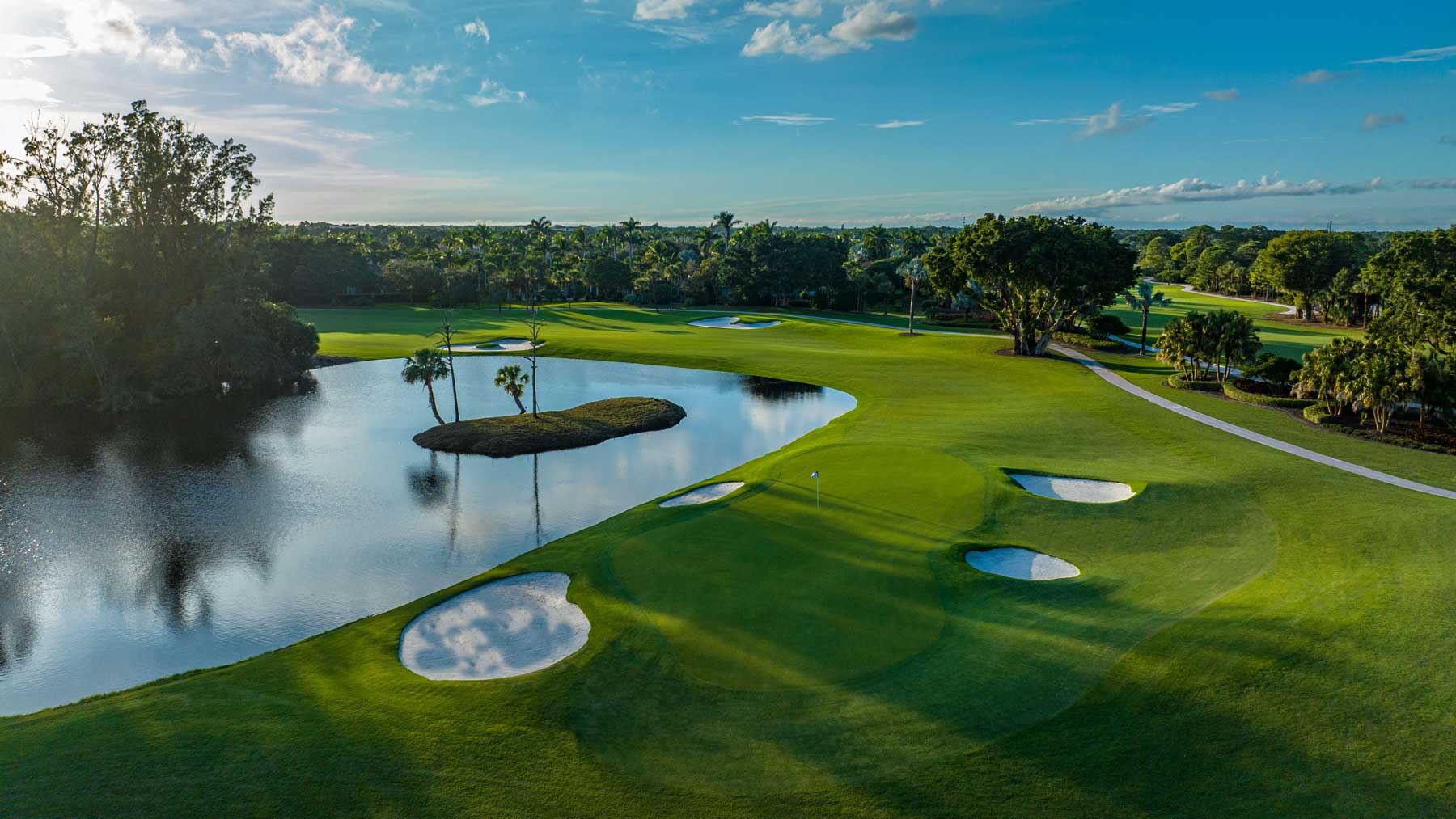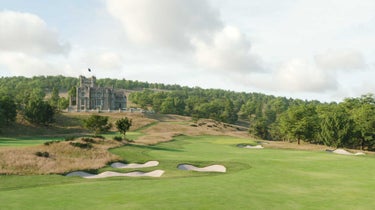
Nicklaus Design tempered some of BallenIsles’ more penal traits to make the challenges more suitable for member play.
ballenisles
Fifty-two years ago this month, the professional game prepped for a major scheduling twist.
Since its birth in 1916, the PGA Championship had been held mostly in the late summer or fall, usually in the Northeast and Midwest. But in 1971, the event moved to Florida, the first major ever for the Sunshine State. The change in region called for a change in timing.
To avoid the sweltering heat of summer, the PGA of America switched its flagship event to February. In an unprecedented shift that has not since been repeated, Glory’s Last Shot became the first major of the year.
The venue was the East Course at what was known then as PGA National Golf Club, in Palm Beach Gardens, a young property with a notable history of its own. Developed in 1964 by the insurance magnate and real estate mogul John D. MacArthur, the club had been an early host site of the PGA Merchandise Show. In 1965, its Dick Wilson- and Joe Lee-designed East Course had also staged the original PGA Tour Qualifying School.
At the ’71 PGA Championship, Jack Nicklaus seized a first-round lead and never looked back, going on to a wire-to-wire win — for what would be his ninth of a record 18 career major titles. With the victory, he became the first player in history to complete the career Grand Slam twice. His big achievement came in what was also a big year for the club. In addition to the PGA Championship, the East Course that year also played host to the PGA Seniors; the Q-School finals; and the World Cup, featuring the largest field ever assembled for the event.
Time moved on, and much transpired.
In 2021, on the 50th anniversary of Nicklaus’ PGA Championship win, the club, which since 1988 has been known as BallenIsles Country Club, decided to embark on a refresh of its East Course. In a fitting bit of symmetry, it hired Nicklaus Design to do the work (Nicklaus Design is an affiliate of 8AM Golf, GOLF.com’s parent company).
The mandate was to make everything old new again, paying homage to some of the original Dick Wilson design features where the general layout of 13 of the original 18 holes still existed, while tempering some of the layout’s penal traits to make the challenges more suitable for member play.
“The goal was to make the course a little more user-friendly while retaining its championship nature,” said Chris Cochran, senior designer at Nicklaus Design, who led the project.

Ballenisles
To that end, all 18 holes were refined, always with variety and strategy in mind. The greens, once similar in shape and size, were transformed into an engaging mix, some small, some large, some tame, some wild, and set at different angles to approach shots. A number of the crowned putting surfaces that Wilson favored have were also mellowed to make them more receptive. Deep bunkers were shallowed. Run-off areas were added around targets, along with naturalistic humps and hollows to allow for more compelling recoveries. In all, the new design is more thought-provoking, fun and memorable than the original layout.
As part of the $6.3 renovation, which was unveiled late last month, the practice grounds were also reimagined, with a new 65-bay two-sided range equipped with Toptracer technology, and a short-game area with a 25,000-square-foot putting green. A new learning center is also in the works, set to be completed this spring.
BallenIsles has continued bolstering its rich tradition as a tournament site; more recently, it has been a regular host of local amateur competitions, as well as sectional qualifiers for national events. Today, even as it appeals to members, the club aims to build on that championship legacy.
“We’re proud of our history,” said Ryan Walls, the club’s general manager. “And we’re looking forward to creating more in the years ahead.”










